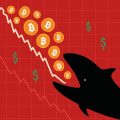The cryptocurrency market is once again in the international spotlight: the European Central Bank (ECB) is sounding the alarm over a possible “financial infection” from the US, ING — the largest bank in the Netherlands — is developing a European stablecoin in compliance with the MiCA regulation, and Richard Heart, founder of HEX, PulseChain, and PulseX, has announced a victory over the SEC.
ECB Concerned: Trump’s Crypto Policy Poses a Threat to Europe’s Economy
Amid Donald Trump’s rising political activity and his openly pro-crypto stance, the European Central Bank has expressed concern over potential financial destabilization such a policy could trigger. This was reported by POLITICO, citing internal ECB sources.
The regulator’s key concern lies in the possible surge in popularity of dollar-based stablecoins, such as USDC and USDT, if supported politically by a future US administration. The ECB believes this could:
— accelerate the outflow of capital from Europe to the US;
— undermine the sovereignty of the European financial system;
— create conditions for a new wave of inflationary pressure within the EU.
The term “crypto infection” is increasingly being used in Europe — referring to the effect where external crypto market growth influences macroeconomic indicators within the bloc. This mounting pressure only strengthens the need for Europe’s own stable digital solutions.
Europe’s Response: ING to Launch MiCA-Compliant Stablecoin
Amid the ECB’s concerns, the Netherlands’ largest bank, ING, is actively developing a European stablecoin that will fully comply with the MiCA regulation, which comes into force on June 30, 2024.
According to informed sources, ING plans to launch the project as part of a consortium involving other banks and crypto firms. Progress is slow, as participants must obtain approval from their boards of directors to form a joint venture.
MiCA introduces strict requirements for stablecoin issuers:
— mandatory storage of at least 60% of reserves in European banks;
— obligations regarding transparency, audits, and reporting;
— direct oversight by ESMA and national regulators.
Tether CEO Paolo Ardoino has already criticized these rules, stating that they «create systemic risk» by limiting the flexibility and resilience of issuers. Nevertheless, the EU sees MiCA as a crucial step toward legal clarity and consumer protection.
HEX vs SEC: The First Full Legal Victory of a Crypto Project Over the Regulator
Meanwhile, in the US, a landmark event has occurred that could reshape the industry: the SEC has decided not to resume its legal case against Richard Heart, founder of HEX, PulseChain, and PulseX. He announced the news on X (formerly Twitter), sharing a letter from the Commission.
According to Heart:
> “This isn’t just my victory. It’s a precedent. It’s a defense of open-source, digital assets, and freedom of speech.”
He emphasized that the court dismissed all SEC claims against the projects, marking the first time in history that a crypto company has achieved a full case dismissal at every level. Community support played a significant role: HEX supporters heavily funded legal defense, and within the crypto space, heated debates erupted about how far regulators might go.
This outcome could weaken the SEC’s position in future cases against crypto projects and become a pivotal moment for an industry long plagued by legal uncertainty.
Conclusion: The Crypto Industry at a Turning Point
Three independent yet interconnected events underscore how complex the crypto market has become in 2025:
— Europe fears losing financial autonomy and is responding with new tools;
— Major banks are beginning to compete with crypto giants for the stablecoin market;
— The US crypto community gains legal confidence after a historic win against the SEC.
Amid geopolitical, economic, and legal shifts, crypto assets are no longer just an investment tool — they are becoming the epicenter of global financial transformation.




